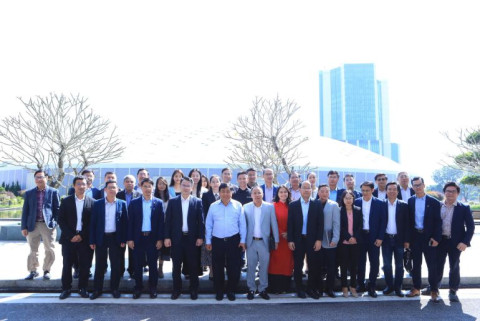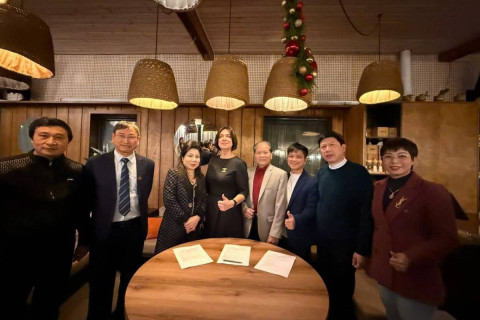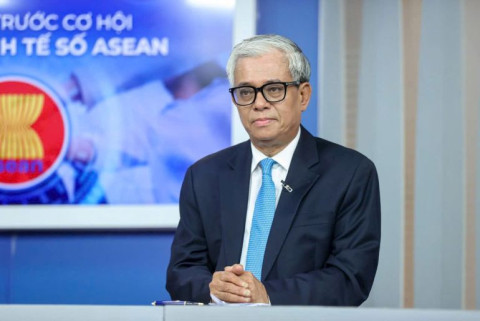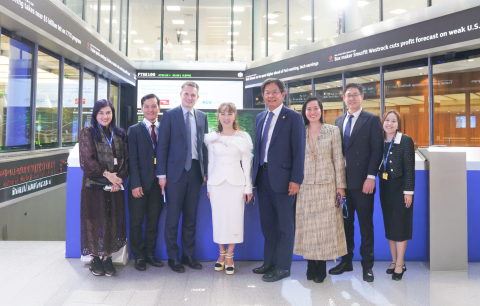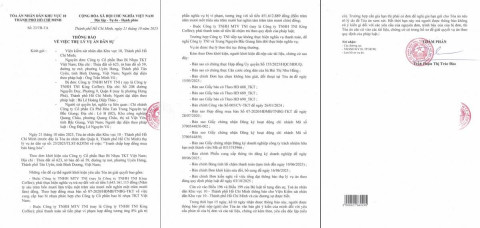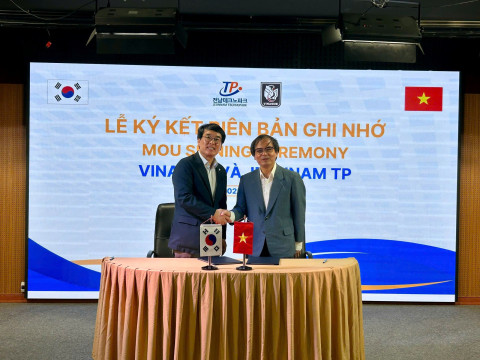Golden opportunity for Vietnamese exports to Middle Eastern countries after the Covid-19 pandemic
- 146
- Business
- 15:32 23/03/2022
DNHN - On March 17, 2022, at the Export Showroom 92 - 96 Nguyen Hue in Ho Chi Minh City, the Ho Chi Minh City Investment and Trade Promotion Center (ITPC) hosted a seminar titled "Golden opportunity for exporting Vietnam to Middle Eastern countries following the Covid-19 pandemic" to assist city businesses in resuming production, identifying partners, and expanding export markets in the new context.
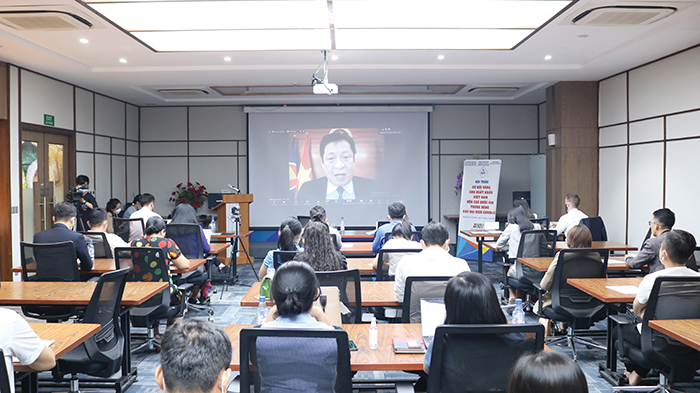
Speaking at the opening of the seminar, Mr Nguyen Tuan - Deputy Director of ITPC said that the Middle East (including 16 countries) is emerging as a potential export market for Vietnamese enterprises with a population of about 400 million people with a high standard of living.
The Middle East region's trade profited and strengthened following the global economic crisis of 2008-2009, owing to the world economy's recovery and the increase in oil prices. Simultaneously, FDI inflows into this industry grew, from 681.444 billion USD in 2010 to 932.404 billion USD in 2018. Middle Eastern countries' outside investment also increased within the same period, from $234.369 billion to $542.455 billion.
Vietnam's trade relations with the Middle East region mainly focus on the countries of the Gulf Cooperation Council (GCC) with 06 member countries, namely the United Arab Emirates (UAE), Saudi Arabia and Saudi Arabia. Arabia (Saudi Arabia), Kuwait (Korea), Bahrain (Barah), Qatar (Catalan) and Oman (Oman), have a total population of 65 million (in 2021).
GCC countries have an open economy, develop foreign trade, attract foreign investment, tourism, services, diversify the economy, promote import and export. GDP per capita is high, in 2021 Qatar is 60,000 USD, UAE is 41,000 USD, Kuwait is 25,000 USD and Saudi Arabia is 22,000 USD. Since January 2003, 6 member countries have implemented a Customs Union (CU) and agreed to apply a common import tariff with a tax rate of about 5% applied throughout the region for most products.
MMrNgo Toan Thang, Ambassador Extraordinary and Plenipotentiary of Vietnam in Kuwait said that 6 GCC countries are all WTO members. Trade barriers in the GCC countries' markets are the requirement for certificates of standards, quality assurance, labels, etc., issued by the Gulf Standards and Metrology Organization (GSMO), and Halal certificates for imported food and seafood products.
In recent years, Vietnam's import and export turnover to GCC countries has increased rapidly and has increased dramatically from 2012 to the present. If in 2012, Vietnam's import and export turnover to GCC countries only reached 2.7 billion USD, by 2021 it has increased 4.6 times, reaching 12.5 billion USMr
Mr. Thang stated that Vietnamese enterprises have numerous potential in the GCC market. Vietnam has a long history of friendship and diplomatic relations with the Gulf Cooperation Council (GCC) members. Additionally, the two sides have a fairly adequate legal framework for developing and strengthening cooperative relations (signed economic, trade, and scientific-technological cooperation agreements with 5/6 countries s, the trade agreement with 2/6 countries; agreement on avoidance of double taxation with 5/6 GCC countries; agreement on investment promotion and protection with 4/6 countries; agreement on air transportation with 5/6 countries; established the Intergovernmental Advisory Committee on Economic Cooperation).
The diplomatic network functions as a bridge to facilitate trade and cooperation: the GCC has four embassies and three trade offices, while Vietnam has five GCC embassies. Due to vast financial resources, the GCC block possesses considerable purchasing power and solvency. GCC's import-export structure is quite compatible with Vietnam's strong export products and needs, and GCC's import tax is relatively low.
Sharing more about the Middle East market, Mr Nguyen Tuan - Deputy Director of ITPC said that these countries have a huge import demand (ranging from US$2 billion to US$8 billion) for items such as furniture. wood, plastic products, cereals, textiles, footwear, rubber and rubber products, meat, milk and dairy products, vegetables of all kinds, etc. These are the strong commodities of Vietnam. However, the proportion of these products of Vietnam in the import structure of Middle Eastern countries is still low, not commensurate with the potential of the two sides.
Besides, the agricultural sector of the Middle East is still underdeveloped due to harsh natural conditions; the Manufacturing industry is difficult to develop, so this area still has to import a lot of food and consumer goods. Statistics show that these countries import about 80% of food items, equivalent to about 40 billion USD/year. By 2035, the total import value of food and foodstuffs of Middle Eastern countries is expected to increase to 70 billion USD/year.
Another benefit when exporting to the MiddlEastst is the import tax rate of only 0-5% for goods imported from outside the bloc. Because of this, the Middle East has become a potential market for Vietnam.
In terms of Ho Chi Minh City, the Middle East represents a significant untapped market. Ho Chi Minh City's exports to Middle Eastern countries have expanded considerably in recent years. In the UAE alone, Ho Chi Minh City's total import-export revenue is anticipated to be 340 million USD in 2021, with exports accounting for 230 million USD, an increase of 13% over 2020. Exports from Ho Chi Minh City to Iraq are expected to surpass 130 million USD in 2021, a 21% increase.
The main products that Ho Chi Minh City exports to the Middle East markets include: seafood, vegetables, fruits, vegetables, coffee, pepper, textiles, computers and electronic components, phone components, etc.
According MrMr. Nguyen Tuan, currently, Vietnamese enterprises in general and Ho Chi Minh City in particular still face many difficulties in accessing the Middle East market such as lack of information, barriers in logistics and international payment. Therefore, businesses need support from Vietnam's diplomatic agencies in the region, as well as trade and investment promotion agencies such as ITPC.
It is expected that shortly, ITPC will continue to deploy market survey missions, connect trade and meet modern distribution channels in the Middle East, especially the two strong export markets of Vietnam. Vietnam is now the United Arab Emirates (UAE) and Kuwait (Koot).
Sharing about the potential of the Kuwait market, Mr Ngo ToMrThang said that this country has many advantages for Vietnamese businesses. Kuwait is an open market, domestic consumption is mainly dependent on imports and import taxes are low (from 0%-5%) for most goods. Currently, Kuwait has not applied VAT and personal income tax.
This is also a market with strong purchasing power, with GDP per capita over 25,000 USD per year; with a big proportion of migrant workers constituting the bulk of the population, demand for products is broad in terms of kind and quality and serves as a gateway to other GCC markets. Kuwait's economy is well-resourced internally, is less affected by the global economic slump, and continues to expand rapidly, particularly in the finance, construction, real estate, oil and gas, power, and commodities industries.
On the other hand, Vietnamese commodities such as cellphones, seafood, footwear, agricultural products, food, and household products have acquired a foothold in the Kuwaiti market, with rising competitiveness in comparison to the Chinese and Malaysian markets.
According to ITPC
Related news
#exports
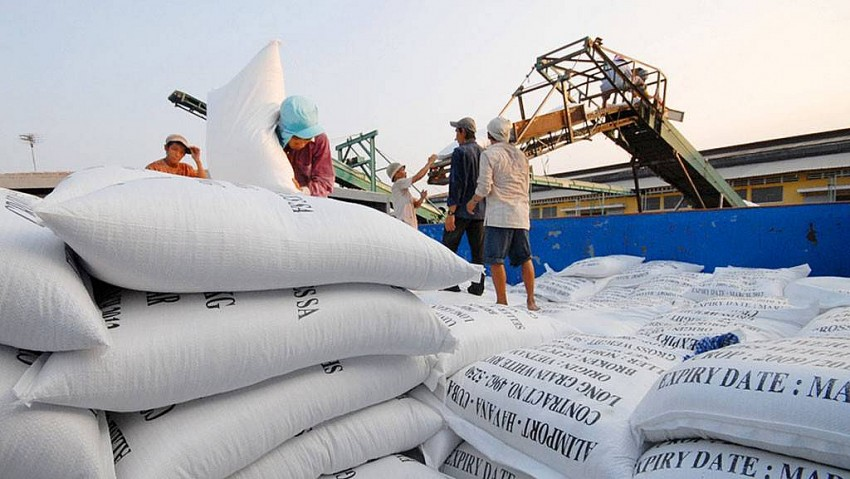
Rice export prices expected to rebound soon due to limited supply
The Vietnam Food Association (VFA) has forecasted that rice exports in 2025 will reach 7.5 million tons. The rice market is currently at its lowest point, but it is anticipated that importers will soon ramp up purchases, driving prices upward.
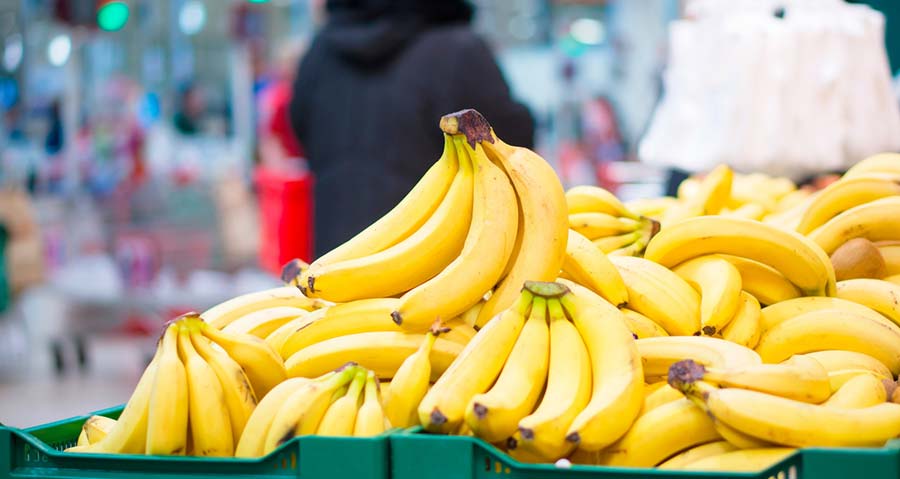
Agricultural export businesses must comply with EU's maximum residue level regulations
By February 2025, the EU will have new regulations affecting many important agricultural products from Vietnam, including coffee, pepper, rice, durian, banana, mango, and vegetables like onion, garlic, and chili.

Rice exports and unpredictable factors in the second half of 2024
Vietnam is a leading country in rice production and export but is currently facing many challenges in the rice industry in the last months of 2024.
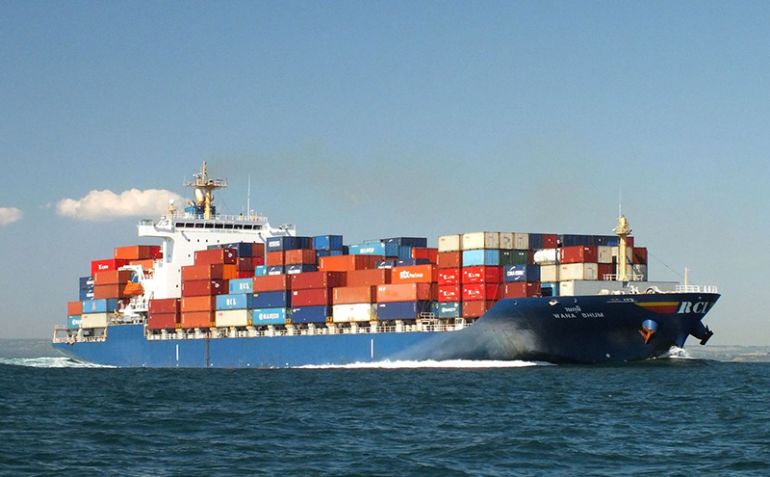
Export businesses face difficulties as sea freight rates rise
Logistics costs have now increased by about 130% compared to the end of 2023. This reality has been pushing domestic export businesses into a state of freezing many export orders.
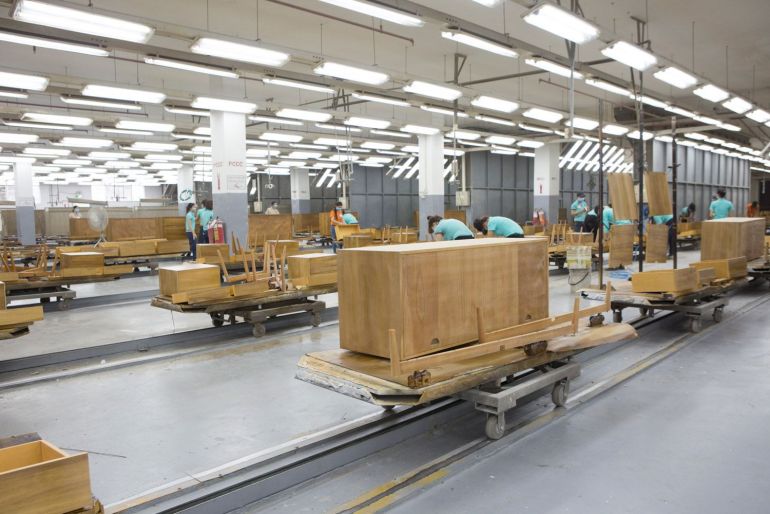
The wood industry expects export turnover to exceed $16 billion in 2024
This is the assertion of Mr. Ngo Sy Hoai. He expressed confidence that with the improvement of the global economy and market conditions, demand for wood products will be boosted and export turnover will reach over USD 16 billion for the year.
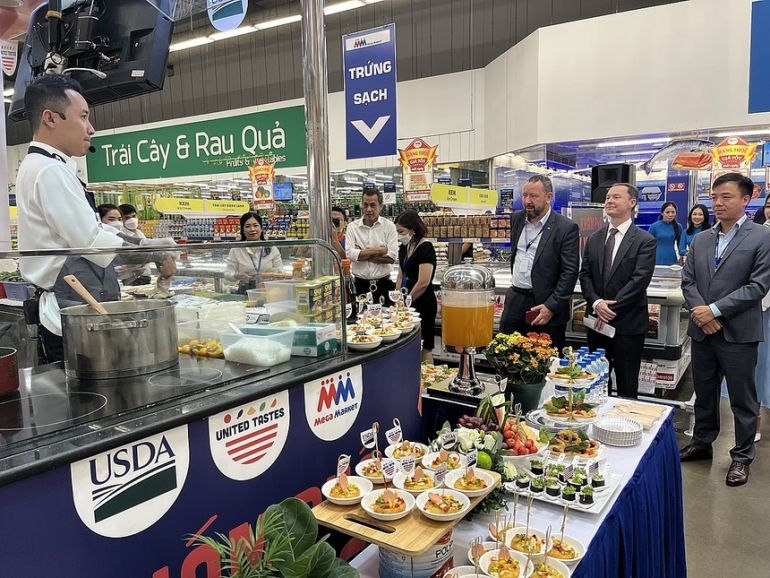
Digital transformation: A breakthrough step for trade promotion activities
Mr. Vu Ba Phu, Director of the Trade Promotion Agency, emphasized that the primary solution to enhance the effectiveness of trade promotion activities and boost exports is to focus on digital transformation.
Đọc thêm Business
From New Year messages of World Leaders to the “new rules” of the Global economy in 2026
At a pivotal moment of transition, New Year messages from capitals such as Hanoi, Beijing, Washington and Paris reflect distinct priorities and strategic visions.
Connecting Leaders, Shaping the Future: Strategic Leadership Planning Meeting – CorporateConnections Hanoi A
"Your network is your most powerful flowing asset. It generates value, multiplies opportunities, and accelerates your influence across borders."
Innovative ESG enterprise: Trạm Xe Việt startup proposes solutions to build a green mobility ecosystem
As Vietnam commits to achieving Net Zero by 2050 and tightens emissions standards, the transportation sector faces unprecedented pressure to transform.
Deputy Prime Minister Nguyễn Chí Dũng: “The country’s major challenges weigh heavily on my mind — and we must resolve them together.
On the morning of November 26, 2025, Deputy Prime Minister Nguyễn Chí Dũng chaired a high-level working session at the National Innovation Center (NIC) in Hòa Lạc.
Unitsky String Technologies signs cooperation agreements with three Vietnamese partners, opening a new direction for smart mobility and sustainable development
The signing ceremony took place in Minsk, Belarus, on November 28, 2025.
Before the D‑day to abolish flat‑rate tax: Fear of technology and costs leave small traders struggling to adapt
From 1 January 2026 the flat‑rate tax regime will be abolished. Small business households will be required to declare tax based on actual revenue. MISA supports the transition with technology to help micro‑merchants adapt smoothly and transparently.
Vietnamese enterprises at a crossroads: the impact of a potential US–China deal
As the world closely monitors every shift in US-China relations, emerging signals of a strategic agreement between the two global powers are raising hopes for global economic stability.
HDBank: Impressive profit growth, leading in profitability and advancing international integration
Ho Chi Minh City Development Joint Stock Commercial Bank (HDBank, stock code HDB) announced its consolidated profit before tax for the first 9 months of 2025 reached VND 14,803 billion, marking a 17% increase year-on-year (YoY).
TNI King Coffee sued for over VND 5 Billion in unpaid debts
On October 21, 2025, the People’s Court of District 10 in Ho Chi Minh City officially accepted a civil lawsuit concerning a commercial contract dispute between TKT Vietnam Plastic Packaging Joint Stock Company and TNI King Coffee Co., Ltd.
VINASME and Jeonnam Technopark Sign MOU on technology cooperation, human resource training, and trade promotion
On October 15, 2025, in Hanoi, VINASME and Jeonnam Technopark (Korea) signed an MOU to promote trade, advance technology transfer, and develop human resources between enterprises of both nations.





